20 Best Saltwater Fish For Nano Reef Tanks
Posted by Miles Harrison on 09/22/2022
Experienced aquarists from both the saltwater and freshwater aquarium hobby are familiar with the term "nano tank". Aquariums that are considered nano are ones that are less than 40 gallons in size. In this post, we’ll recommend 20 of our favorite stocking options for your nano reef tank!
Table of Contents
Tailspot Blenny
Native to the Western Pacific, Ecsenius stigmatura, also known as the Tailspot Blenny, is first on our list of interesting reef-compatible nano fish. This fish has the unique ability to change its eye color when threatened. Tailspot Blennies have an eye-catching coloration, the front of the body has a light-blue hue that transitions to yellow, and eventually a deep orange towards the tail.
Tailspot Blennies grow to be about 2.5” in length, and when given optimal water conditions, have a life expectancy of around 2-4 years. Aquarists will be happy to know that these fish are quite peaceful, and do well with other species.
These fish are algae eaters but will eat small invertebrates and worms as they browse the substrate searching for new food sources.
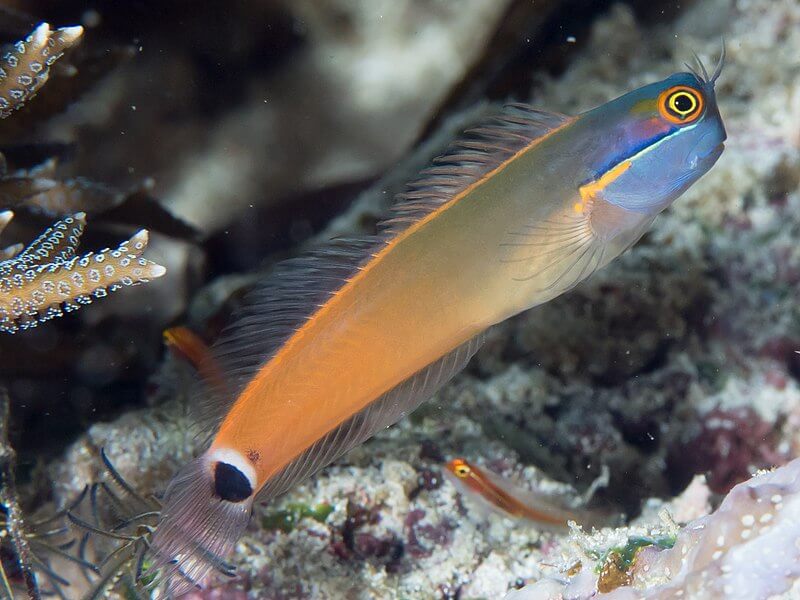
Yellow Clown Goby
Next up on our list is the Yellow Clown Goby. Native to the Western Pacific and the waters of southern Japan, the Yellow Clown Goby has a vibrant coloration and often hovers in the center of the water column.
Many hobbyists consider this fish a must-have for a nano tank, and we tend to agree. These peaceful fish are even capable of recognizing their owners! The active personality of this fish makes it an excellent choice for saltwater aquarium hobbyists.
These fish typically live for around 2-6 years, grow to be about 1.5 inches in length, and require a diet of frozen Mysis and brine shrimp.
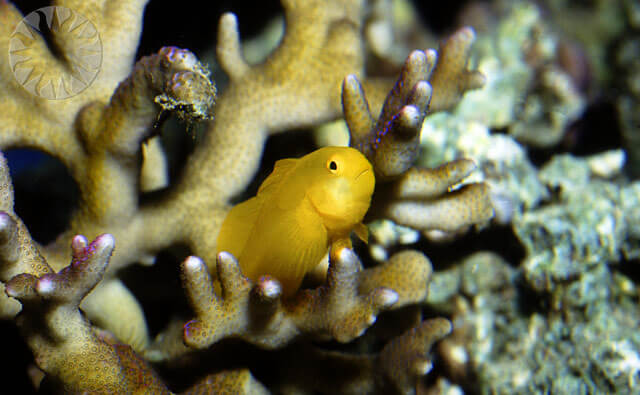
Tanaka’s Pygmy Wrasse
Named after famous Japanese researcher Hiroyuki Tanaka, this wrasse fish is relatively new to the hobby; it was only first identified in 2007! This reef-safe species has a striking red body, partitioned by vertical white stripes.
Known for its elusive personality, this fish prefers to hide out in caves, and will typically hang out in caverns formed by live rock. A peaceful species, their diet consists mostly of frozen brine shrimp and high-quality flake food.
These fish grow to be about 2.5 inches in length and can live for about 5 years in captivity.
Hi-Fin Red Banded Goby
The candy cane-styled body of this fish makes it worth heavy consideration for a nano tank. This goby, like other gobies, will form a symbiotic pair with Pistol shrimp, such as the Japanese Pistol Shrimp.
This peaceful fish only requires an aquarium of at least 10 gallons! Unfortunately, these gobies are relatively short-lived, as they have a life expectancy of around 3 years. Feeding this species a healthy diet consisting of vitamin-enriched brine and Mysis shrimp twice a day will allow this fish to live a happy and healthy life!
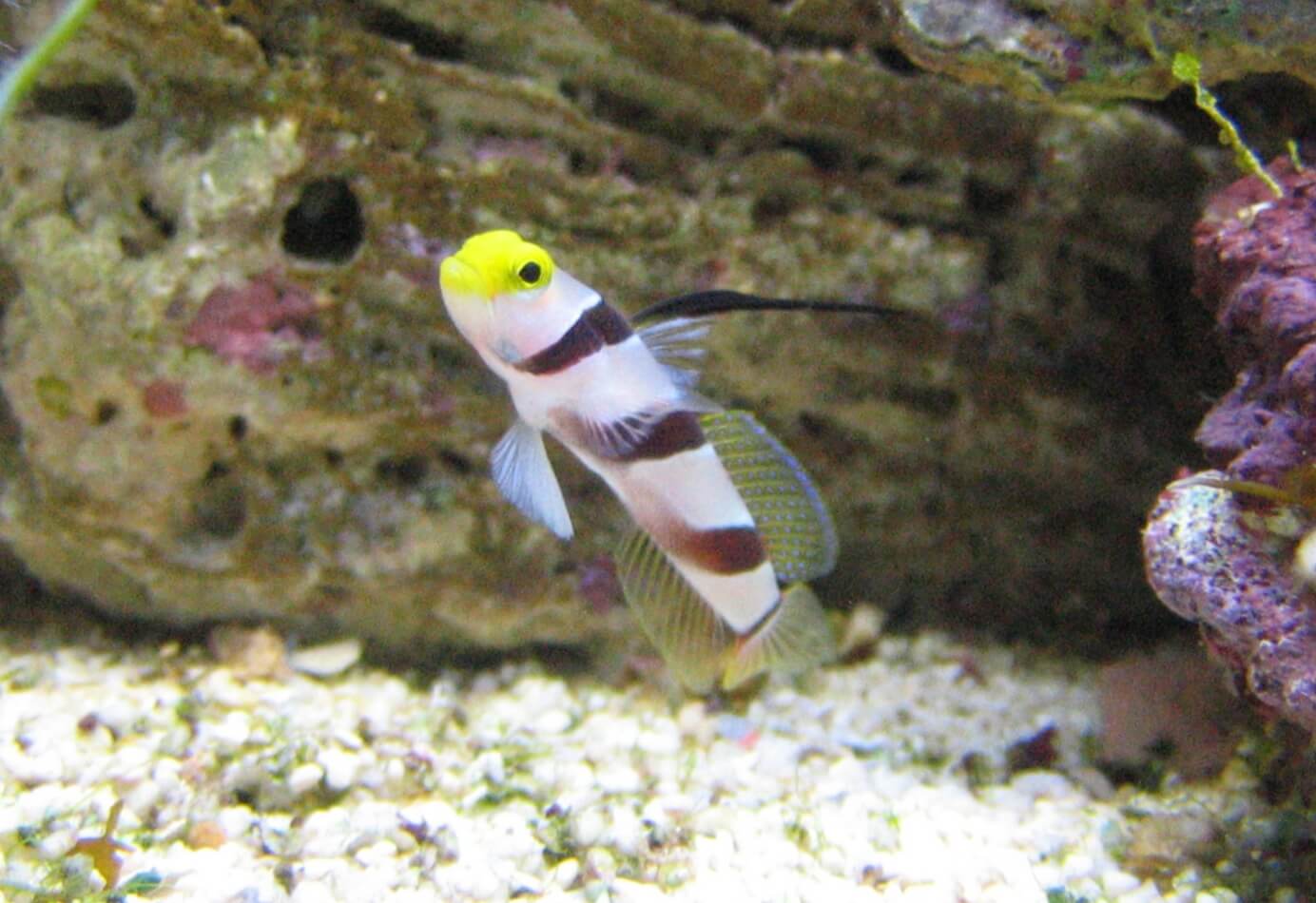
Flaming Prawn Goby
Reef-friendly and known for its peaceful disposition, the exotic Flaming Prawn Goby requires at least a 24-gallon aquarium.
Hobbyists will be impressed by its unique appearance, it has sparkling-red pectoral fins, and a distinct retractable dorsal fin, making this quite an eye-catching species.
The flaming prawn goby requires expert care and is not a beginner-friendly fish. These fish only reach up to about 2 inches in length! You’ll want to make sure this goby has plenty of available hiding spots, the last thing you’ll want is this species to end up as a snack!
Sailfin Blenny
The Sailfin Blenny, occasionally referred to as the Algae Blenny, is known for its algae-grazing abilities and lively personality.
These fish, requiring an aquarium of at least 30 gallons, can grow to be about 5 inches in length. Sailfin Blennies often perch on live rock or swim across the substrate in search of new food sources.
Native to the Caribbean Sea, this attractive species can live for up to 4 years.
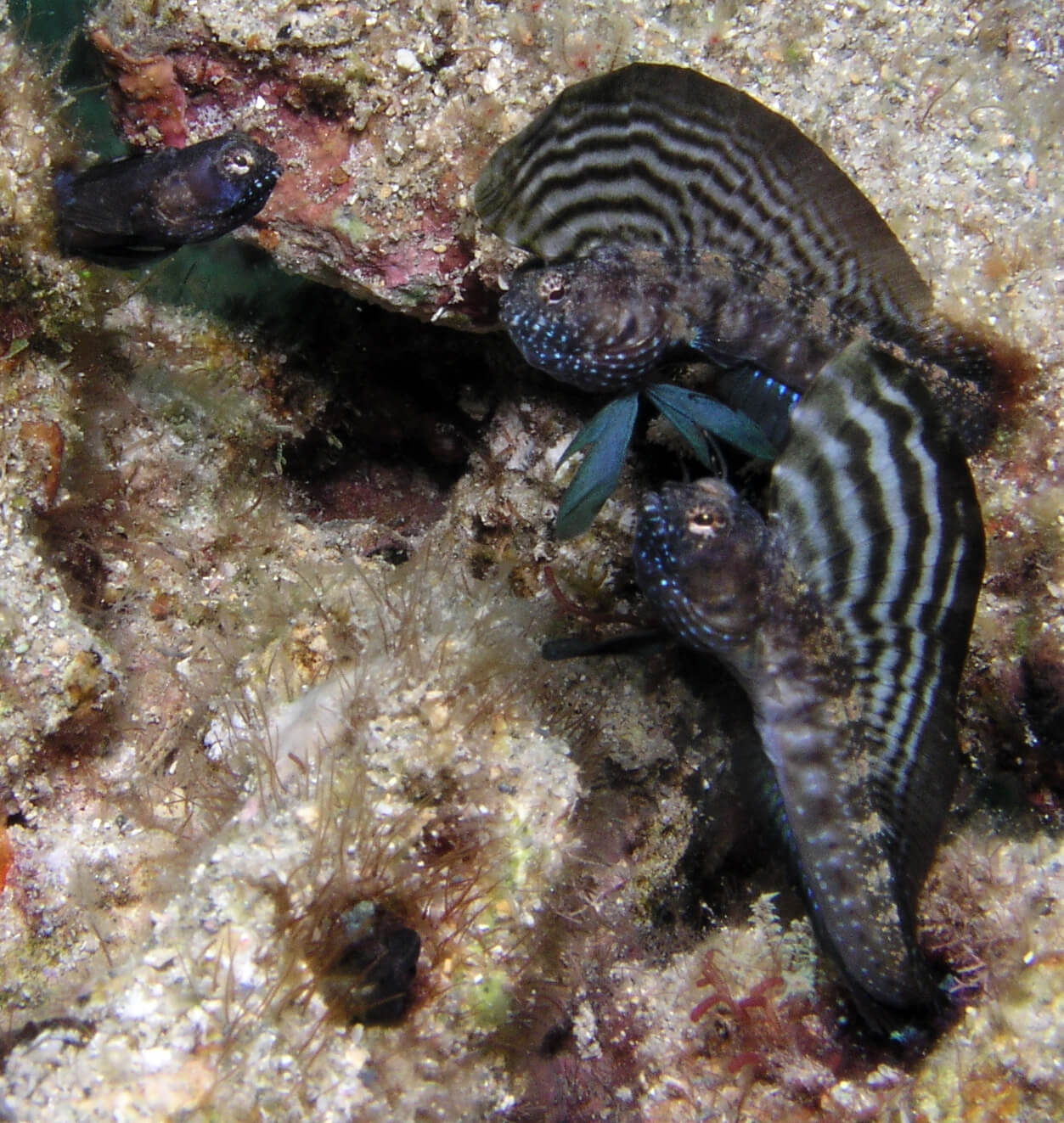
Royal Gramma
A classic reef fish, the Royal Gramma grows to be about 3 inches in length, making it the perfect option for a nano tank. Aggressive towards other Royal Gramma, this fish must be kept singly.
These fish require a carnivorous diet and should be fed brine shrimp and Mysis shrimp to reach their life expectancy of 6 years.
This species prefers plenty of caverns and caves to hide in, and can even occasionally be spotted swimming upside-down!
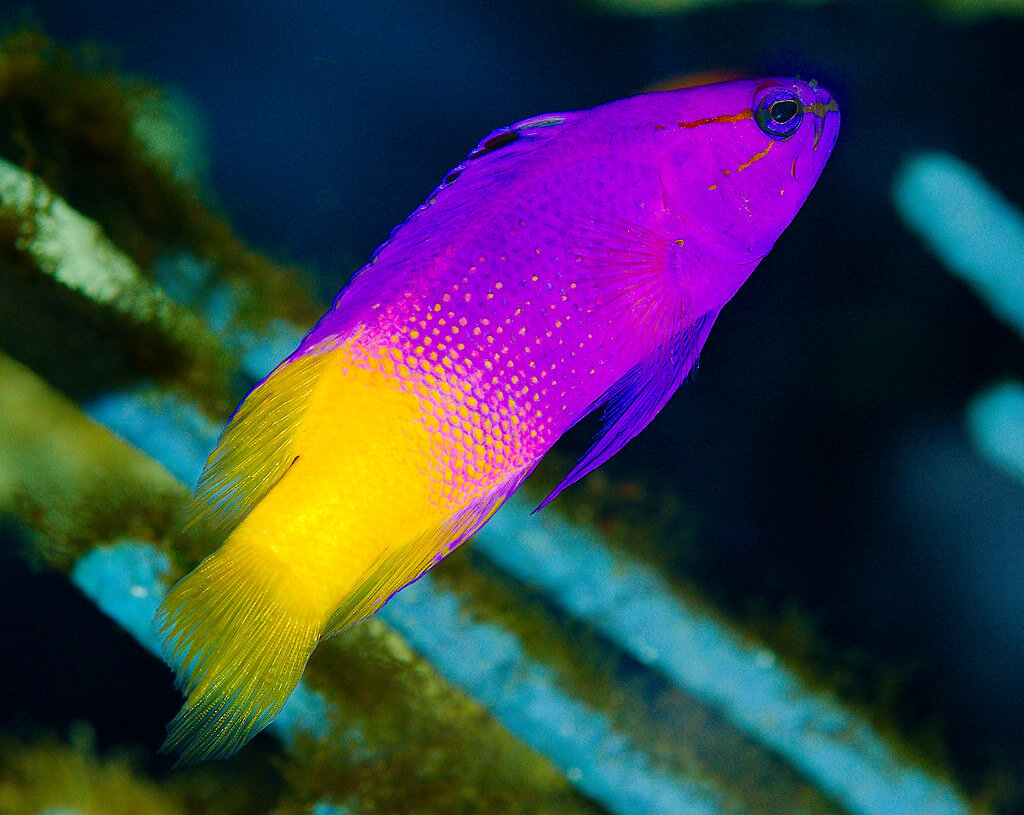
Snowflake Clownfish
While most Clownfish are suitable for a nano tank, one of our all-time favorites is the Snowflake Clownfish. This unique designer clownfish was first produced in the United Kingdom, and was once considered an oddity!
Similar to other clownfish, the snowflake clownfish will do quite well in a nano tank. These fish typically reach about 4 inches in length, and will happily pair up with an anemone. This symbiotic relationship is exciting to watch in a home aquarium and is one of the reasons why this species is so popular.
With a life expectancy of up to 5 years, the erratic swimming behavior and color patterns of this species will be sure to please in a nano aquarium.
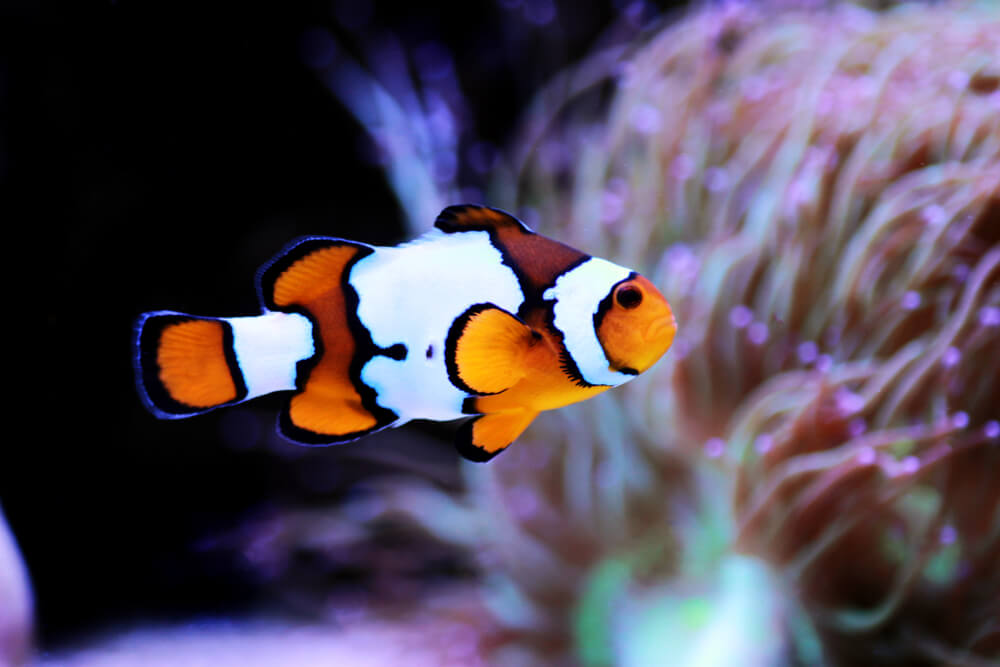
Yellow-tail Blue Damsel
Formally documented in 1918 by zoologist Henry Fowler, the Yellow-tail Blue Damsel is a nano tank favorite. This exciting species has the ability to change color based on external stimuli. The fish will alert hobbyists if it’s under stress by turning a darker color blue.
Known as a beginner fish, this hardy species has been documented to live for quite a long time in captivity. Yellow-tail Blue Damsels have been documented to have a lifespan of up to 15 years!
Although these fish only grow to be about 3 inches in length, they are a very aggressive species. You’ll want to do proper research before adding a Yellow-tail Blue Damsel to an aquarium that already houses other livestock.
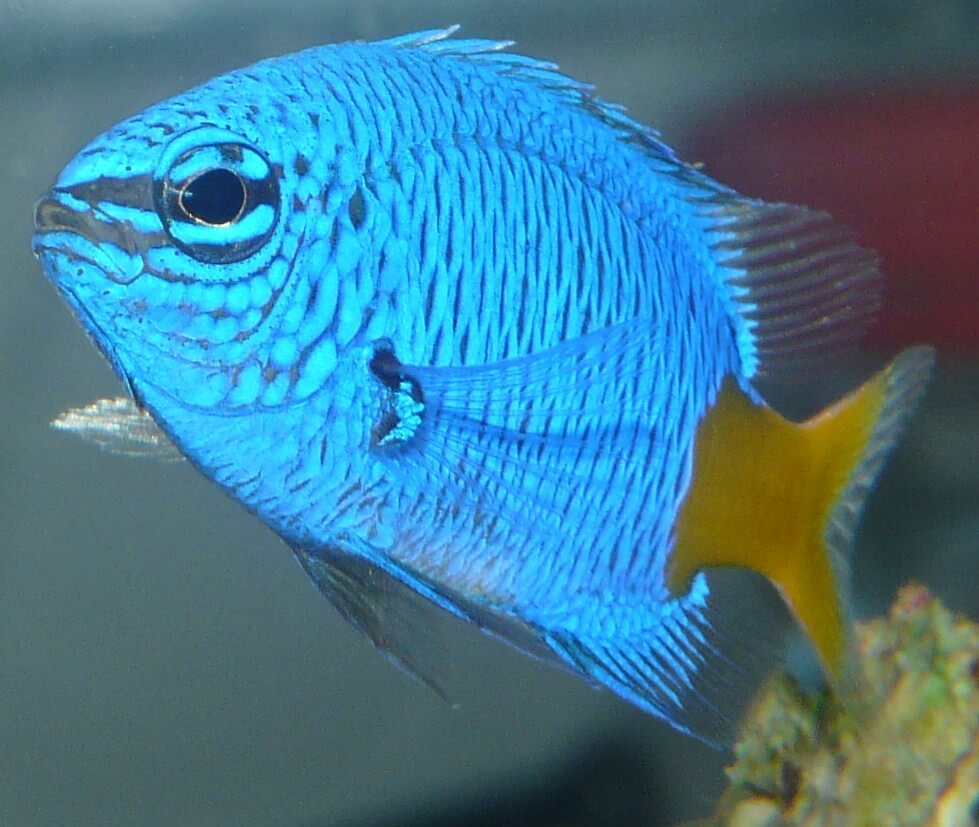
Pink Skunk Anemonefish
Ranging from pink to peach in color, the Pink Skunk Anemonefish can be found all over northern Australia.
Requiring an aquarium of at least 30 gallons, this species is a great choice for beginners new to the hobby. Known for their vertical white stripe behind their eye, their appearance makes them an interesting species to observe. Experienced aquarists have even found success breeding this eye-catching species in captivity!
Reaching up to 4 inches in length, these fish have a surprisingly long life expectancy. These fish have been documented to live for up to 21 years in captivity!
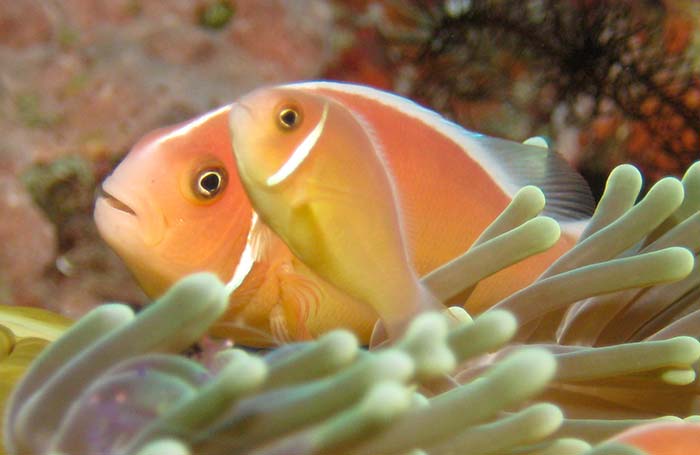
Pink Streaked Wrasse
Known as the quintessential wrasse for nano tank, the Pink Streaked Wrasse is one of our favorite wrasse fish available in the hobby.
These fish are quite shy at first, but over time grow more confident, and can be seen happily swimming in between different types of coral and live rock. Many aquarists even consider this fish to be one of the most peaceful species they’ve ever owned!
These fish only require a 15-gallon aquarium, but it’s worth mentioning that these fish are known jumpers! You’ll want to make sure you have a tight-fitting lid if you’re interested in keeping this awesome species. With a life expectancy of 5 years, this 2.5-inch fish is sure to please!
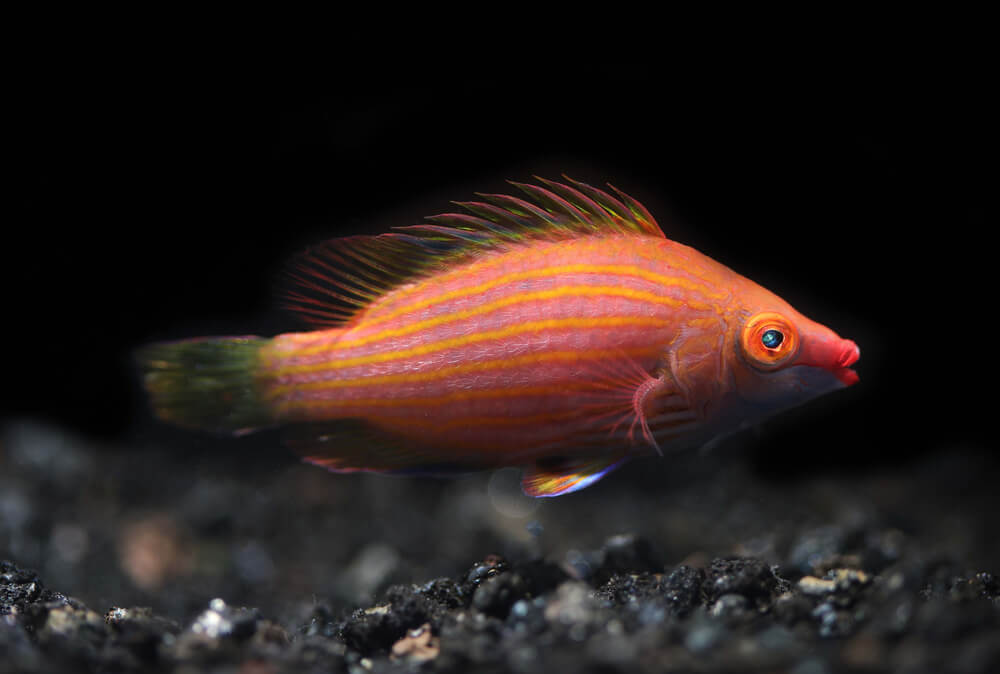
Saddleback Clownfish
This black and white clownfish is a nice alternative compared to the more common Ocellaris clownfish. These fish are native to the Indo-Pacific, and like other clownfish, will form a symbiotic relationship with a sea anemone.
Saddleback Clownfish make a great addition to a reef aquarium, however, it’s important to note that these fish prefer to be kept in pairs. You’ll want to be sure that your tank won’t be considered overstocked with the addition of two of these fish.
Growing up to 5 inches in length, these fish will enjoy meaty foods, such as Mysis and Brine shrimp, and can live for up to 5 years in captivity.
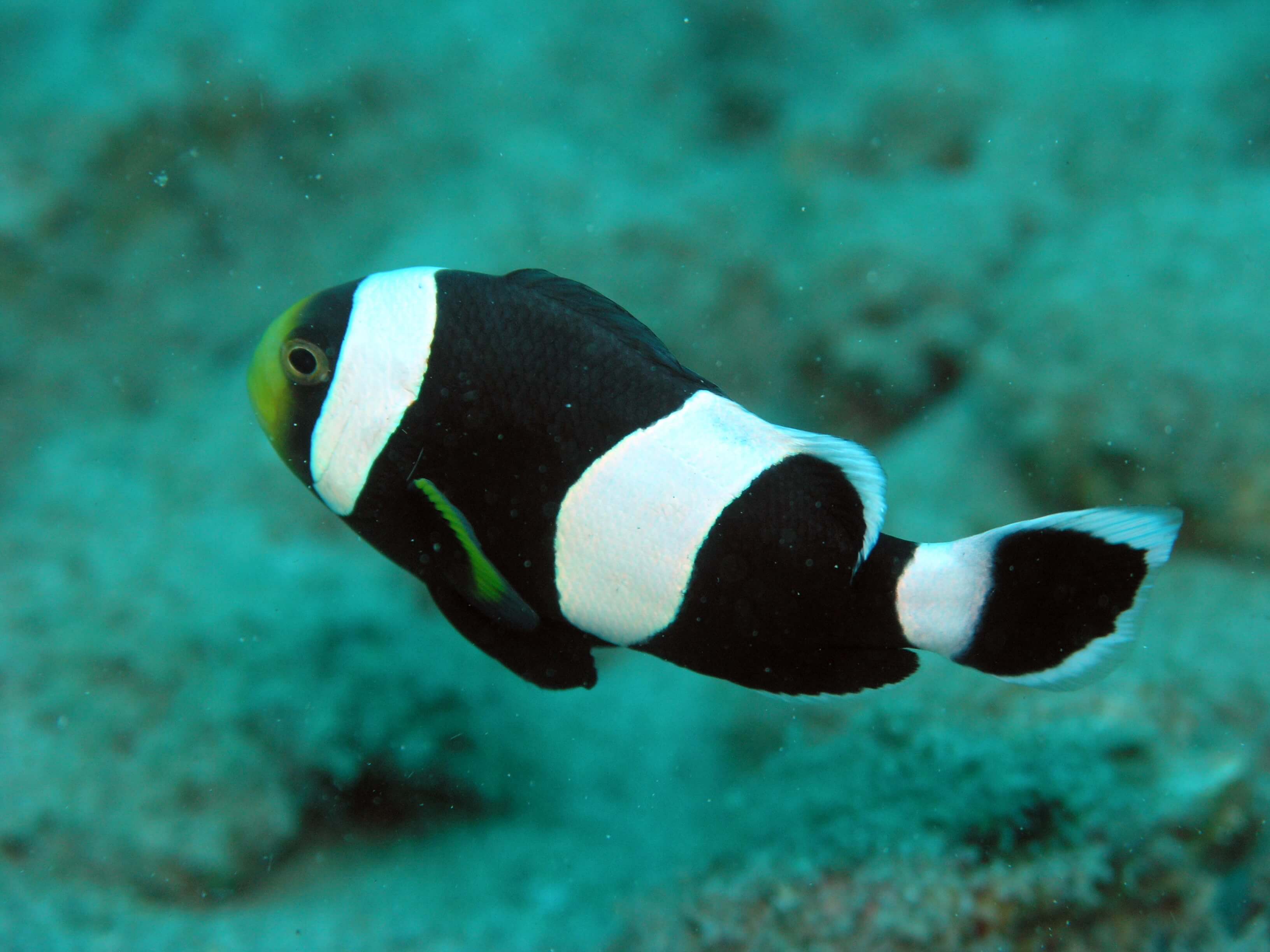
Six Line Wrasse
Known for its distinct appearance, as you probably guessed, the six line wrasse has six bright horizontal stripes. These stripes run across the body of the fish, which is mostly blue. The face of the fish has shades of purple and orange, and its unique green tail will make any passerby stop in their tracks.
Relatively easy to keep in an aquarium, these fish will need plenty of open water to swim. You’ll want to be sure your nano tank has plenty of open space, so you may want to think twice about owning this species if you have an abundance of coral and live rock.
Growing up to about 3 inches, this species has been documented to live for up to 10 years in captivity.

Blue Devil Damselfish
One of the most popular fish in the entire saltwater aquarium hobby is the Blue Devil Damselfish. Highly aggressive, this fish should not be kept with other Blue Devil Damselfish or other passive fish.
Easy to care for, this species reaches up to 3 inches and will adapt quite easily to high-quality flake food.
Considered by many to be one of the most beautiful fish available in the hobby, this fish can live for 15 years when given optimal water conditions.
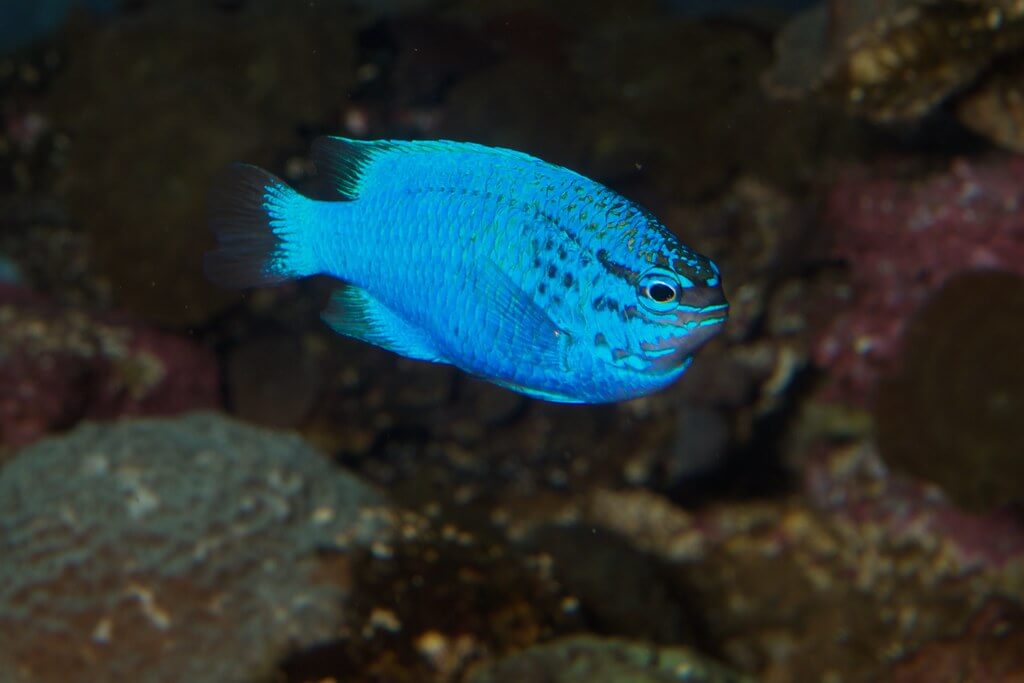
Blue Spotted Puffer
Also known as the Blue Dot Sharp-nosed Puffer, or the Blue Dot Toby, the Blue Spotted Puffer is known for its beauty. These fish have orange bodies covered by small iridescent blue spots.
Unfortunately, if you plan on keeping a lot of coral, you may want to stay clear of this species. They are known to pick at different types of coral, and even invertebrates! As a result, we only recommend this fish if you plan on keeping them in a fish-only nano reef tank.
These fish grow to be about 4.5 inches in length and live for about 4 years.
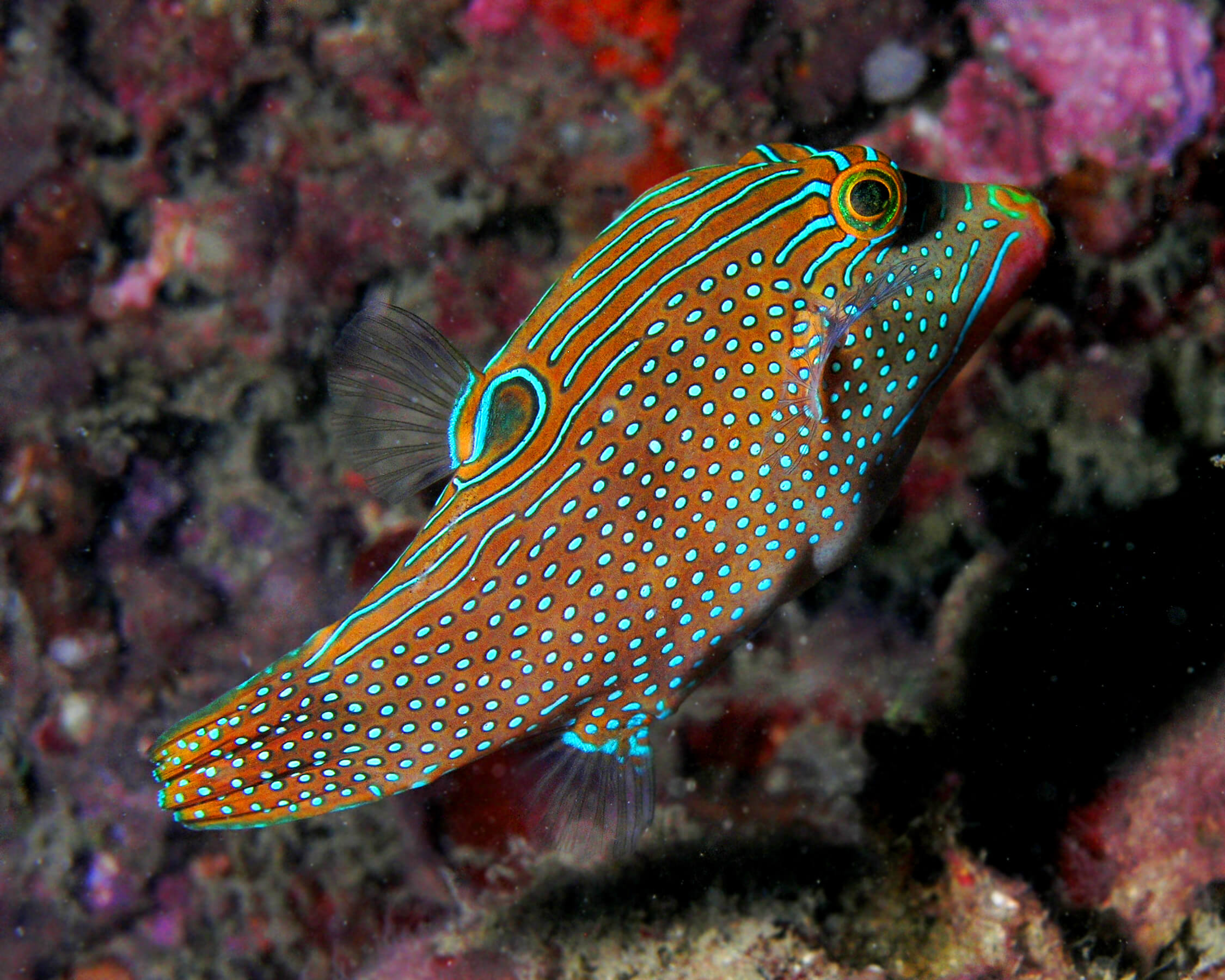
Green Reef Chromis
Known as the de-facto beginner fish. The Green Reef Chromis is perfect for anyone that’s just getting into the reef-keeping hobby. These fish have a gorgeous light-blue coloration, and will actively swim throughout the water column.
Known for being reef-safe, having a peaceful temperament, and being very tolerant of subtle swings in water chemistry, the Green Reef Chromis will do very well in a nano reef tank.
Given excellent water quality, these fish can live for up to 15 years, and only grow to be about 4 inches in length. Commonly kept in groups in large reef tanks, you can still benefit from keeping 1-2 of these exciting fish in your nano reef tank!
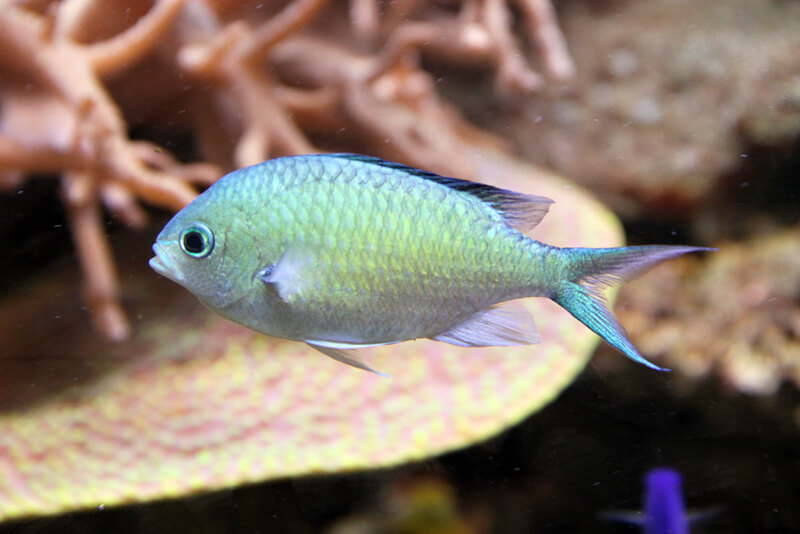
Firefish Goby
One of the most common types of goby fish is the Firefish Goby and for good reason! This species has a deep red tail that transitions to orange, and then eventually white towards the face of this fish. Their appearance resembles a flame swimming throughout an aquarium.
In the wild, these species hover directly over reefs, constantly scanning for new food sources. In a nano tank, these fish are quite active and will dart in and out of a provided hiding space. It’s no wonder that these fish are also referred to as Fire Dartfish!
You’ll want to provide plenty of hiding spots if you plan on keeping this species. A 20 Gallon aquarium with plenty of coral and live rock will be perfect! As with other goby fish, you’ll want to keep a tight-fitting lid on your aquarium, as these fish are known jumpers.
Growing to be about 3 inches in length, these fish can live for about 3 years.
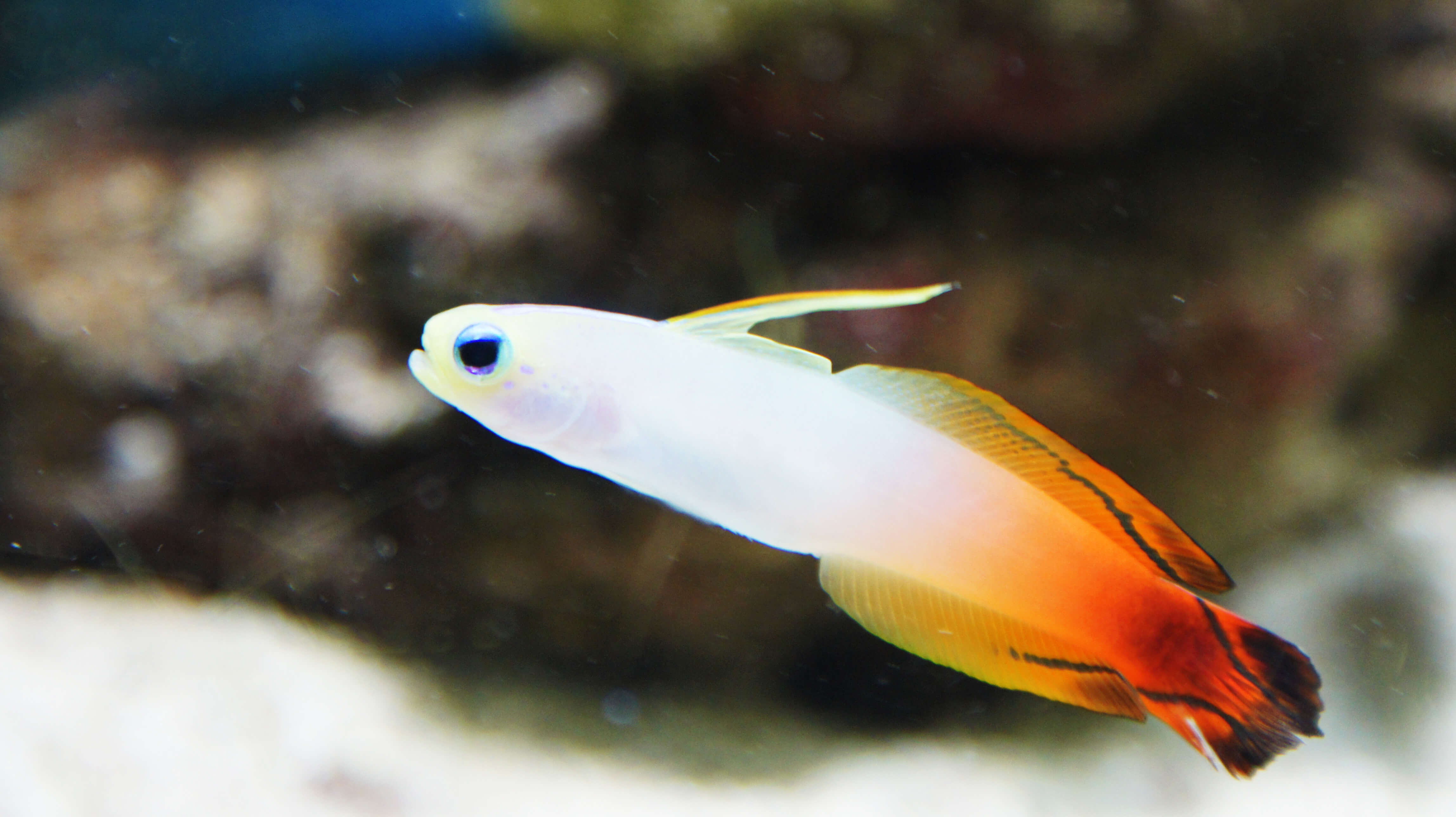
Snowflake Eel
Potentially one of our most controversial recommendations, next on our list is the Snowflake Eel. These eels can grow quite large - up to 2 feet! While these eels do best when kept in aquariums 50 gallons or larger, you can have success with this species in a nano tank.
You’ll need to provide plenty of hiding spaces for the eel to hang out, however, these fish are quite active and are known to kick up sand and knock over hardscape. Unless you plan on gluing down your hardscape, you may want to consider another species.
Their meaty diet requirements also mean that water chemistry levels are more susceptible to fluctuations. If you plan on purchasing this species, be sure to have a backup plan in place in case you need to transfer the eel to a larger aquarium.
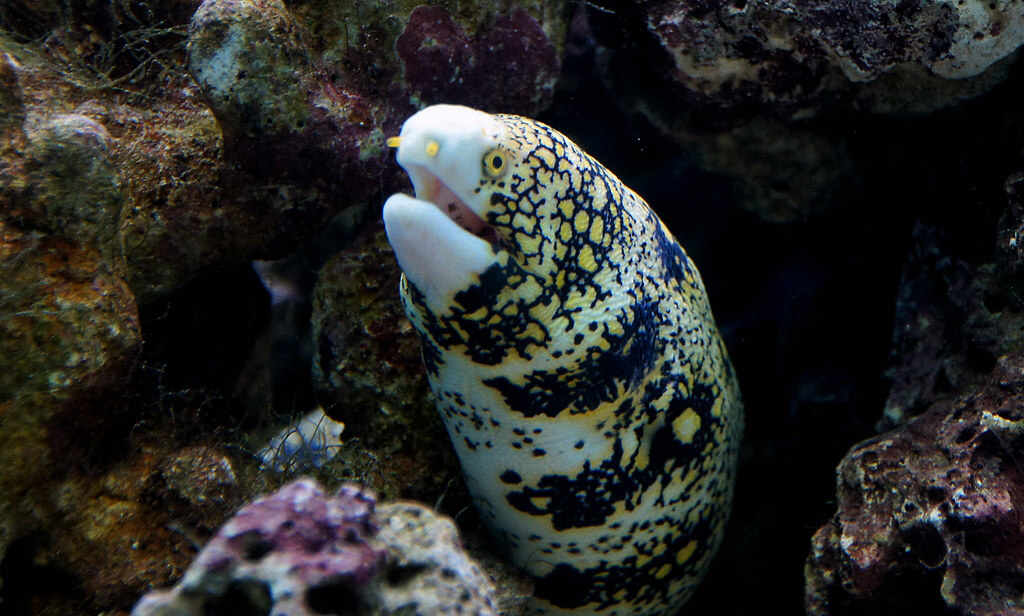
Flame Cardinalfish
Known as a slow swimmer, the Flame Cardinalfish, commonly referred to as the Flamefish, is a 4-inch fish with an all-red body. These fish do great in a reef tank, and only show signs of aggression towards their own species.
Known to be quite hardy, and capable of withstanding common diseases, this fish is a great option for new hobbyists. These fish have even successfully bred in captivity.
Active at night, these nocturnal fish can live up to 15 years, and typically sell for a price point that won't break the bank.
Maroon Clownfish
One of the most popular clownfish variations, the Maroon Clownfish is one of the most aggressive types of available clownfish. Aquarists will find enjoyment in keeping a pair of these fish in a 30-gallon nano tank, but once added, you should avoid adding any additional tank mates. The territorial behavior of the Maroon Clownfish will stress any new additions.
Known for their feisty personalities, maroon clownfish are one of the most popular types of saltwater fish in the hobby, their gold stripes, and maroon pigmentation make for quite a display of color in a reef tank with various types of coral.
Living till about 7 years on average, there have been reports of these fish living for up to 20 years! Be ready to be in it for the long haul if you’re considering purchasing this famous species.
Growing to be about 7 inches, this fish closes out our list of 20 of the best saltwater species for nano reef tanks.
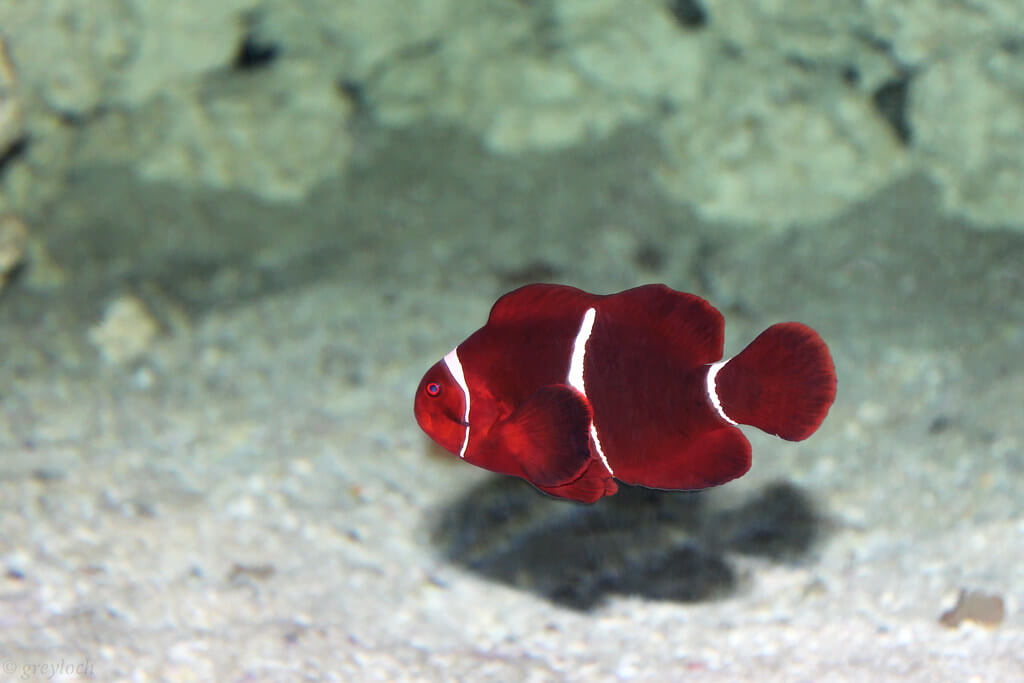
Where to Purchase
Hobbyists looking to pick up any of these fish should visit our marketplace, where you can buy directly from other hobbyists. However, if you still can't find exactly what you're looking for, we built a massive list of over 250+ online aquarium stores where you can shop for tropical fish.
Best of all, you can search the list by shipping origin state, so you can find aquarium stores that offer shipping nearby!
Conclusion
Nano reef tanks are some of the most uniquely sized aquariums available in the hobby. Known for their portability, they present interesting stocking challenges for the advanced aquarist.
Beginners in the hobby may think that having a smaller-sized aquarium makes for an easier experience. However, nothing is further from the truth. Smaller tanks mean rapid changes in water chemistry, and overcrowding can cause territorial issues that are extremely difficult to deal with.
Hopefully, after reading this list of recommended fish, you’ll be well equipped to make smart stocking decisions for your nano reef tank. Although you won’t be able to house larger reef fish, such as surgeonfish, you can clearly see that there is no shortage of amazing nano fish available in this wonderful hobby!
December's Giveaways on Light Fish








